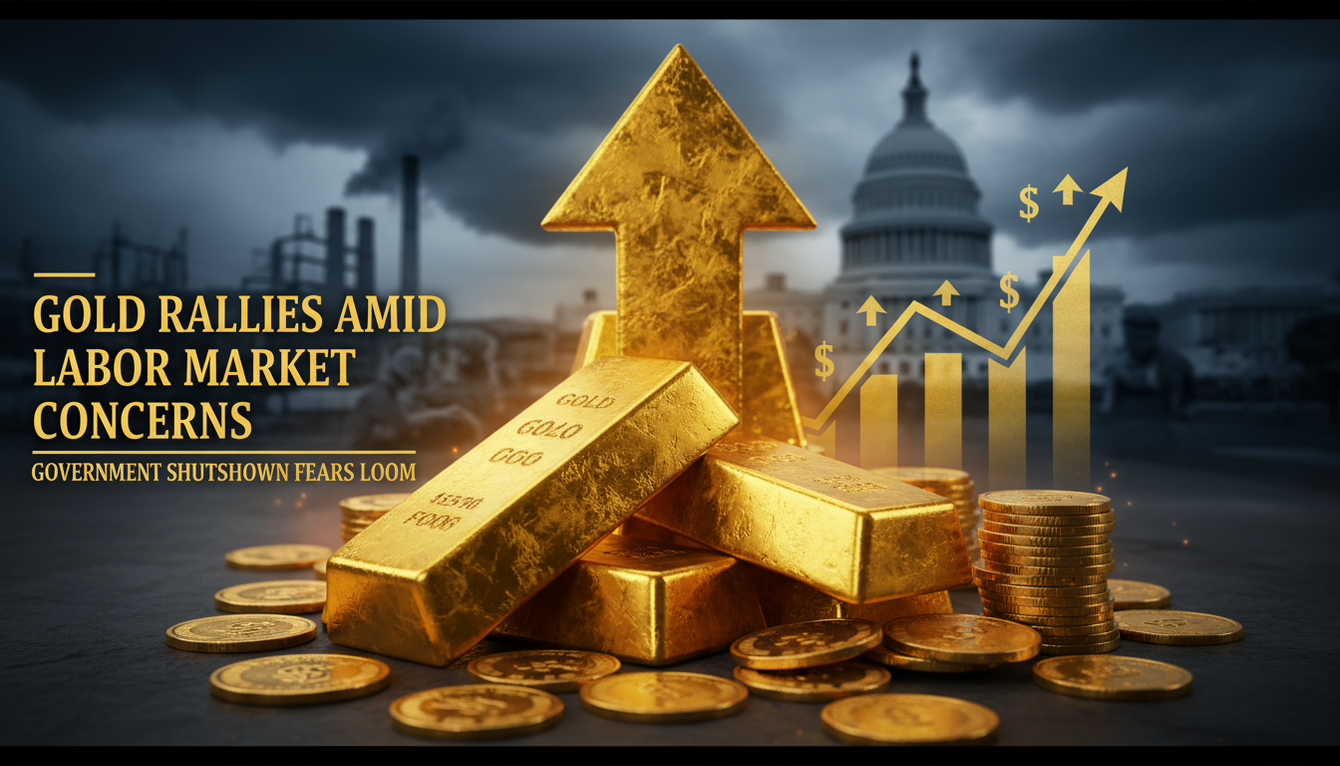Gold extended its upward momentum on Tuesday, marking a third consecutive session of gains with a modest increase of $12, or 0.29%. This follows Monday's dramatic surge of over $100, which analysts attribute primarily to mounting concerns over the deteriorating U.S. labor market.

The catalyst for Monday's sharp rally emerged from ADP's non-farm payroll report, which revealed some of the most significant employment cutbacks since 2020. The October data painted a troubling picture of labor market conditions, sending investors toward safe-haven assets like gold.
The report's market impact was magnified by an extraordinary circumstance: the ongoing U.S. government shutdown has created a critical data vacuum. With agencies like the Bureau of Labor Statistics (BLS) offline, the Federal Reserve and market participants have been deprived of essential governmental reports on employment and inflation that typically inform monetary policy decisions. This information blackout has left policymakers navigating economic conditions with incomplete visibility.
However, there may be light at the end of the tunnel. The Senate narrowly approved a bill on Monday that could potentially end what has become the longest government shutdown in U.S. history. The resolution of this impasse carries significant implications for financial markets and monetary policy deliberations.
Market observers suggest that once the shutdown ends and comprehensive economic data resurfaces, the case for a December interest rate cut may strengthen considerably. The theory holds that official government statistics, once released, will corroborate the weakening trends already evident in private-sector reports, presenting an even more concerning portrait of the U.S. economy—particularly regarding employment conditions.
In the absence of traditional government data, alternative indicators have taken on heightened importance. The University of Michigan's consumer sentiment survey reinforced the narrative of economic softening, showing confidence slumping to its lowest level in three and a half years during early November. This decline in consumer optimism adds another dimension to concerns about the economy's trajectory.
Silver has demonstrated its characteristic tendency for amplified volatility alongside gold's movements. December silver futures surged approximately 4.5%, adding $2.18 to reclaim the psychologically significant $50 threshold. The white metal's rally continued into Tuesday's session with an additional gain of $0.67, or 1.33%, pushing prices above $51 to settle at $51.07 in futures trading. This outperformance relative to gold exemplifies silver's traditional role as a more volatile companion to its yellow counterpart in precious metals markets.
The synchronized advance in both gold and silver reflects broader market anxieties about economic conditions and potential shifts in monetary policy amid unprecedented uncertainty created by the government shutdown and deteriorating labor market indicators.
For those that would like more information about our services click here
Wishing you as always good trading,

